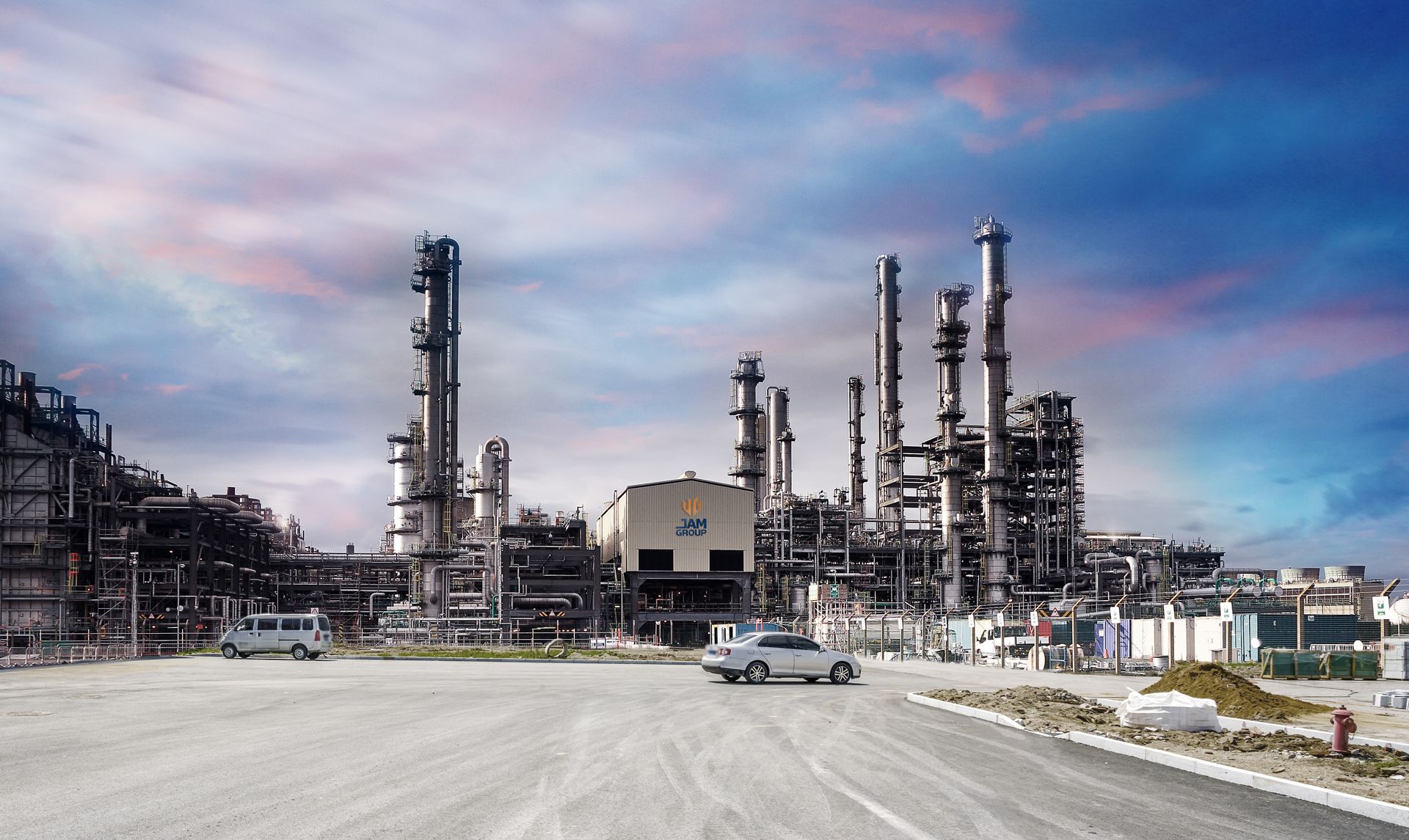Chemical compounds such as caustic soda possess various unique properties that make them versatile substances. These characteristics might sometimes be as diverse as the chemical’s applications. In this case, the manufacturers provide some scientific documents that specify these qualities in detail. These manuals help users to apply their intended chemical compound safely and effectively. They can also learn how to handle and store the substance to reduce possible issues. These useful papers are called SDSs or safety data sheets. In the following, you can explore the caustic soda SDS, which contains valuable information on this substance, and gain additional information.
Before delving into the topic of SDS for caustic soda, we’re going to bring in the name of a trusted caustic soda manufacturer. JAM Group Co. is a well-known company that produces, supplies, and exports caustic soda in various grades, including premium flakes and pearls. They take pride in maintaining state-of-the-art facilities and rely on the knowledge of seasoned experts to ensure the delivery of the best items available. Their reputation as a reliable name in the chemical company has been solidified by their constant dedication to quality and innovation. Their pursuit of quality extends to every stage of production, from sourcing raw materials to delivering a superior caustic soda product that perfectly satisfies their clients’ distinct needs and expectations.
What is a Safety Data Sheet (SDS)?
A Safety Data Sheet, like caustic soda SDS, serves as a comprehensive file containing crucial information concerning a chemical product. They were previously called a Material Safety Data Sheet (MSDS). This paper carefully describes the product’s characteristics, potential risks, safe handling techniques, appropriate storage recommendations, and critical emergency response actions. SDSs are essential for promoting the safe use and management of chemicals in a variety of settings, including workplaces, research labs, and other sectors. SDSs serve as a crucial tool for safety and legal compliance since they provide in-depth information that helps protect human health and the environment while ensuring that chemical compounds are utilized in line with specified safety standards and protocols.
A Closer Look at SDS for Sodium Hydroxide
Understanding the caustic soda safety data sheet (or, as Spanish put it, soda caustica SDS) is critical for anybody working with or around this potent chemical. Caustic Soda, also known as sodium hydroxide, is widely utilized in various sectors but must be handled cautiously and precisely. The caustic soda SDS acts as a valuable resource by outlining its characteristics, hazards, and safe handling procedures. People can reduce the risk of accidents and injuries by learning about the SDS and how to handle, transport, and store caustic soda safely. The SDS also provides vital information on emergency response techniques, facilitating prompt and efficient measures in the event of spills or exposures. Later on, you have the chance to familiarize yourself with some crucial parts of sodium hydroxide SDS.
The Chemical Properties
The SDS for caustic soda provides information on the basic features of this chemical compound, including its chemical properties. The caustic soda formula is NaOH. It is a versatile alkali with a variety of fascinating qualities. Its high level of reactivity with moisture is evident in its pure form, which is a white, waxy solid. This characteristic makes it a hygroscopic substance that quickly absorbs water vapor from the environment.
Moreover, caustic soda pH is about 14 when concentrated, making it very alkaline. Its effectiveness in various applications, including industrial operations and cleaning agents, is highlighted by its severe alkalinity. Additionally, caustic soda has a potent corrosive tendency that makes it capable of dissolving organic materials and causing exothermic reactions when combined with water.
The Physical Properties
According to information provided in its Safety Data Sheet (SDS), caustic soda is a versatile substance with unique physical characteristics. With a high melting point of 318 °C (604 °F) and a boiling temperature of 1,388 °C (2,530 °F), sodium hydroxide is a white, crystalline solid. Notably, this substance has limited solubility in polar solvents like ethanol and methanol but great solubility in water, making it essential in a range of chemical reactions. When dissolved in water, it exhibits a highly exothermic reaction, producing considerable heat. As a result, handling must be done carefully to prevent splashing, raising safety concerns.
It is also vital to note that the substance may be found in different grades and forms, resulting in variations in its physical properties. For instance, caustic soda pearls or beads are frequently homogeneous in size and shape, making precision dosing in industrial applications possible. As a result, caustic soda flakes MSDS differs from MSDSs of other grades.
The Hazards Identification
The hazards identification section of caustic soda SDS serves as an essential manual for handling and applying the substance safely. The warning term “Danger” is prominently displayed to alert users to this chemical compound’s serious risks. Because it is known to be corrosive to metals, it may harm a variety of metallic surfaces. Furthermore, caustic soda has the potential to cause severe skin burns and eye damage, necessitating the use of personal protection equipment such as gloves and safety goggles when handling it. In addition, contact with it might result in serious eye damage. Yet, keep in mind that the type and grade of caustic soda can affect how severe these risks are.
The Fire Fighting Measures
The firefighting measures section within the caustic soda material safety data sheet is an essential resource for dealing with potential fire-related risks.
Selecting the appropriate extinguishing medium is crucial in the event of a caustic soda fire. Laboratory settings should follow specialized fire suppression procedures, and nearby combustible materials or ignition sources could call for the use of the right fire suppression agents. It is critical to highlight that improper extinguishing agents should be avoided. Combined with sodium oxides, caustic soda can produce combustion products such as carbon oxides or other harmful gasses during combustion. To avoid exposure to these hazardous compounds, firefighters responding to such occurrences should use NIOSH-approved respiratory gear or breathing apparatus. Product containers should be relocated away from the fire if possible or cooled with water spray to prevent further escalation of the situation.
Handling and Storage
The caustic soda SDS also contains critical information for safely managing this chemical in its handling and storage section. Due to its corrosive tendency, particularly towards metals, avoiding spillage that could cause material damage is critical when handling caustic soda. It is essential to avoid contact with the eyes, skin, and clothing, and it is advised to wash your hands after handling thoroughly. When handling chemical materials, it is crucial to follow basic hygiene practices and avoid mixing caustic soda with acids. Use ought to be restricted to well-ventilated settings to reduce exposure. Given this situation, it is vital to find a reliable caustic soda supplier that guarantees the substance’s safe handling.
Another crucial part of the substance MSDS, present in the information sheets of every grade, such as in caustic soda beads SDS, is the storage instructions. In terms of this topic, caustic soda needs to be protected from freezing and physical harm, and containers must have adequate ventilation so that potentially dangerous gasses don’t build up. Avoid keeping caustic soda beside sources of intense heat, ignition, open fires, or food to prevent potential risks. It should also be kept away from oxidizing substances to lessen the possibility of chemical reactions. Caustic soda should ideally be kept isolated from corrosive materials and kept in cool, dry environments inside well-sealed containers. However, depending on the grade and form of caustic soda, these storage and handling guidelines may change, necessitating customized solutions for various grades.
Personal Protection
The caustic soda MSDS also comes with a personal protection part describing important safety precautions to take while handling this hazardous substance. It is advised to provide emergency eyewash fountains and safety showers close to the point of usage, handling, and other suitable engineering measures. Utilizing exhaust ventilation or other engineering solutions is recommended to reduce airborne concentrations. While respiratory protection isn’t normally necessary under regular use circumstances, it is crucial when large concentrations of aerosols or mists, such as after spills, are produced.
It is also vital to discuss body protection in a liquid caustic soda SDS. Regarding skin protection, impermeable and resistant gloves should be chosen based on penetration periods, diffusion rates, and degradation concerns, particularly on the grade and form of caustic soda utilized. Eye protection is also of utmost importance, and safety glasses with side shields or goggles are advised. It is crucial to follow general hygiene procedures, which include removing soiled clothing as soon as possible and keeping the chemical away from food, drinks, and feeds. Handwashing before and after breaks is recommended while inhaling gasses, fumes, dust, mist, vapor, or aerosols should be avoided.
Stability and Reactivity
The Caustic Soda SDS’s stability and reactivity section offers vital details on how this chemical behaves in different circumstances. When handled and kept as directed, the substance exhibits high chemical stability; no breakdown is anticipated. However, being aware of potentially dangerous reactions and avoidable circumstances is critical. Incompatible substances include acids, organic compounds, chlorinated solvents, aluminum, phosphorus, tin or tin oxides, and zinc can cause caustic soda to react negatively. Additionally, excessive heat should be avoided since it may have adverse consequences.
Sodium oxides, hydrogen, and carbon oxides (CO and CO2) can be produced during the dangerous breakdown of caustic soda. Keep in mind that these reactivity parameters may change depending on the grade and form of caustic soda being utilized. As a result, it’s critical to adjust safety precautions and procedures to account for unique reactivity and stability variations while ensuring safe handling and storage standards are followed.
Ecological Information
Another part of the caustic soda SDS is dedicated to ecological information about the substance. It offers valuable insights into this chemical compound’s environmental impact and behavior. Caustic soda has a favorable ecological profile because it is easily degradable in the environment. It also lacks bioaccumulative potential, which means it does not accumulate in the tissues of organisms over time. Because of this feature, it has a low impact on the food chain and ecosystems. Additionally, caustic soda has poor mobility in soil, which lessens the chance that it would contaminate groundwater by seeping into it.
Disposal Considerations
Disposing of caustic soda is critical for minimizing environmental impact and ensuring safety. The caustic soda SDS’s section on disposal issues offers crucial advice on ethical waste management. It is essential to separate household trash from items polluted with caustic soda and keep it out of sewage systems and open water bodies. Waste generators are in charge of appropriately describing all waste items following any applicable laws, such as US 40CFR262.11. Choosing the right disposal techniques for caustic soda waste requires careful consideration of all applicable federal, state, provincial, and local requirements. It is advised to neutralize the chemical using diluted acid solutions to make it less dangerous.
Does Caustic Soda SDS differ based on the Grade?
Caustic soda, in its many grades and forms, exhibits distinct features and characteristics, requiring specific safety data sheets (SDS) customized to each version. The SDS for one grade or form, such as caustic soda beads MSDS, may not match the SDS for another due to chemical composition, concentration, and intended usage differences. Consequently, it is crucial to get the SDS directly from the manufacturer. These manuals contain critical safety information, handling directions, and emergency actions, assuring appropriate usage and disposal. Despite these variations, different grades and forms of caustic soda have many properties in common, such as their corrosiveness and possible risks, making them strong alkalis with a wide range of applications. Therefore, even though specifics might vary, a thorough knowledge of caustic soda’s characteristics in general is necessary for safe and efficient application across its wide spectrum.


